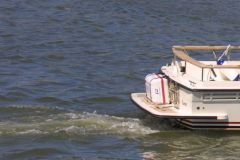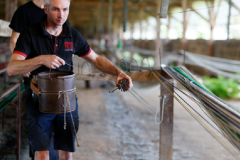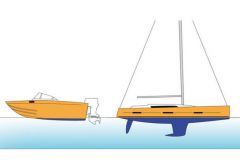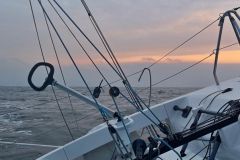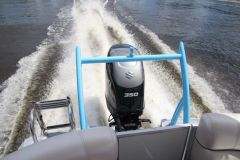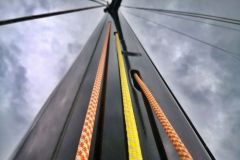" To moor the boat, tie a cleat knot with the end to starboard. "
While all seasoned boaters will understand this sentence without any difficulty, those less used to it may be cautious, to say the least. So let's demystify a little bit the use of ropes on board.

There's no rope on a boat!
First point, there is no rope on a boat (or almost...). There are certainly a lot of ends ( tip is the generic name of a rope ), but more importantly, there are mooring lines used to tie up the boat, halyards used to hoist the sails ( to take them up or down ), and the listeners to adjust them to the right or left ( sorry, port or starboard ), a downhaul to extend the boom downwards, it will be counterbalanced by the topping lift which, as you can see, will hold it upwards. And that's not all: bump, counter sheet, front or rear tip, front or rear guard ... Each end on board has its name according to its use.
What's the point of one end?
A trivial but basic question: What is a "bou-te" (pronounce "bou-te"). An end - a rope in popular parlance - is used to connect two elements on a boat. Whether it's connecting the boat to the shore for mooring with a mooring line or attaching a bucket, every piece of rope on board is a bit, if it's used for anything. In the common name, a piece of rope is used whenever something has to be tied up on board.
Why so many different names?
As with traditional sailing ships, it was necessary to know exactly which end was involved when, in the days of the Royal, it was necessary to manoeuvre huge sails. It is from this need for precision that the precise naming of each rope was born, not just to appear cultivated!
How do I use this end?
The only use of one end being to connect two things, it must be secure. This is the role of the nodes. If dozens of different knots exist, in fact only a handful are absolutely necessary to know, that it is important to know how to make with your eyes closed, we present them in the article Top 5 knots to know imperatively!
We can therefore say that a piece has to have a knot to be used for something, at least at one of its extremities.

Then what do I do?
No one has the science infused, asking the boat owner the questions you don't know the answers to is still the best way to learn (even if you can start by finding a lot of solutions on Bateaux.com...). The boating community as a whole is generous with knowledge.
You are now ready to tuck in, don't delay, the ship's rope will soon tell you good news !






